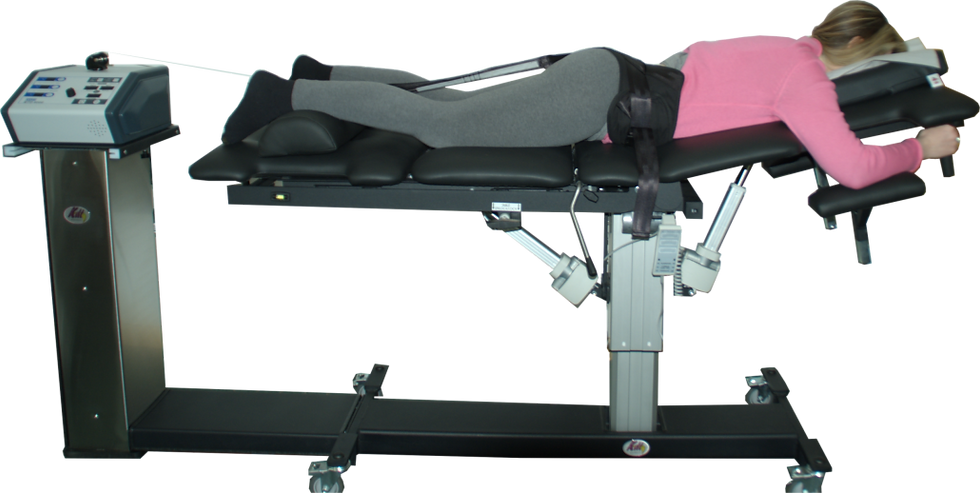Discover the Benefits of Non-Surgical Spinal Decompression for Chronic Back Pain
- Solutions Alternative Healthcare
- Aug 20
- 4 min read

Chronic back pain can be a debilitating condition, making everyday tasks challenging and diminishing overall quality of life. For those seeking relief without the need for surgery, non-surgical spinal decompression offers a promising alternative. This treatment gently stretches the spine, aiming to relieve pressure on the spinal discs and enhance mobility. Complementary treatments such as chiropractic care, acupuncture, and massage therapy can further support spinal health and aid in pain management. In this post, we'll explore how these holistic approaches can work together to provide effective relief and improve well-being for those living with persistent back discomfort. Learn more about spinal decompression therapy.
Understanding Non-Surgical Spinal Decompression

Non-surgical spinal decompression is a therapeutic approach that offers relief for chronic back pain without invasive procedures. This section explores how the treatment works and who can benefit most from it.
How It Relieves Back Pain
Non-surgical spinal decompression works by gently stretching the spine, creating negative pressure within the discs. This process allows bulging or herniated discs to retract, taking pressure off nerves and other structures in the spine.
The treatment is typically performed on a specialized table that's controlled by a computer. Patients are strapped in securely, and the table moves to provide the precise amount of force needed.
Studies have shown that this therapy can increase disc height and reduce pain levels in many patients. The negative pressure also promotes the influx of healing nutrients to the disc area, supporting long-term recovery.
Who Can Benefit Most
Non-surgical spinal decompression is particularly beneficial for individuals with specific types of back pain. Those with herniated or bulging discs, degenerative disc disease, and posterior facet syndrome often see significant improvements.
Patients with sciatica, a condition where pain radiates along the sciatic nerve, may also find relief through this treatment. It's important to note that not everyone is a suitable candidate for spinal decompression.
Individuals with severe osteoporosis, spinal tumors, or certain spinal implants may need to explore other options. A thorough evaluation by a qualified healthcare provider is essential to determine if this therapy is appropriate for your specific condition.
Complementary Treatments for Back Pain

While non-surgical spinal decompression can be effective on its own, combining it with other therapies often yields better results. This section explores complementary treatments that can enhance spinal health and alleviate back pain.
Chiropractic Treatments Explained
Chiropractic care focuses on diagnosing and treating musculoskeletal disorders, particularly those affecting the spine. Chiropractors use hands-on spinal manipulation and other alternative treatments to promote proper alignment of the body's musculoskeletal structure.
The core theory behind chiropractic care is that proper alignment of the spine allows the body to heal itself without surgery or medication. Treatments often involve adjustments where the chiropractor uses controlled force to improve the range and quality of motion in problem areas.
Research indicates that chiropractic care can be effective for various types of back pain, neck pain, and headaches. When combined with spinal decompression, it can provide a comprehensive approach to spinal health.
Exploring Acupuncture Benefits
Acupuncture, an ancient Chinese healing practice, involves inserting thin needles into specific points on the body. This technique is believed to balance the flow of energy or life force known as "qi" (pronounced "chee").
In the context of back pain, acupuncture can help by:
Releasing endorphins, the body's natural pain-relieving chemicals
Reducing inflammation around joints
Improving blood circulation to promote healing
Many patients report significant pain reduction and improved mobility after acupuncture sessions. When used alongside spinal decompression, acupuncture can address both the physical and energetic aspects of back pain.
The Role of Massage Therapy
Massage therapy plays a crucial role in managing back pain by targeting soft tissues such as muscles, tendons, and ligaments. Different massage techniques can be employed depending on the specific condition and patient preferences.
Some benefits of massage therapy for back pain include:
Increased blood flow to sore, stiff muscles and joints
Release of endorphins, which act as natural painkillers
Reduction of stress and tension, which can exacerbate back pain
Massage can be particularly effective when combined with spinal decompression, as it helps relax muscles and improve overall spinal flexibility. This combination can lead to faster recovery and longer-lasting pain relief.
Choosing Spinal Health Alternatives

Selecting the right combination of treatments for your back pain requires careful consideration. This section provides guidance on finding the optimal treatment plan and important questions to ask your healthcare provider.
Finding the Right Combination
Finding the ideal combination of treatments for your back pain involves a personalized approach. What works for one person may not be as effective for another due to differences in pain causes, overall health, and individual responses to treatments.
Start by discussing your symptoms and medical history with a qualified healthcare provider. They can help you understand the root cause of your pain and recommend appropriate treatments.
Consider starting with non-surgical spinal decompression as a foundation and gradually incorporating complementary therapies. Monitor your progress and communicate regularly with your healthcare team to adjust the treatment plan as needed.
Questions to Ask Your Practitioner
When exploring spinal health alternatives, it's crucial to have open communication with your healthcare provider. Here are some important questions to ask:
What is the expected timeline for seeing results?
Are there any potential side effects or risks associated with the treatments?
How many sessions will I likely need?
What lifestyle changes can support my treatment plan?
How will progress be measured and tracked?
Remember, a good practitioner will welcome your questions and provide clear, understandable answers. Don't hesitate to seek a second opinion if you're unsure about a recommended treatment plan.



Comments